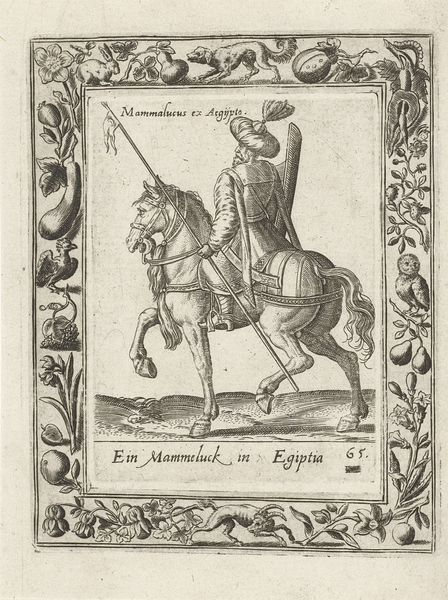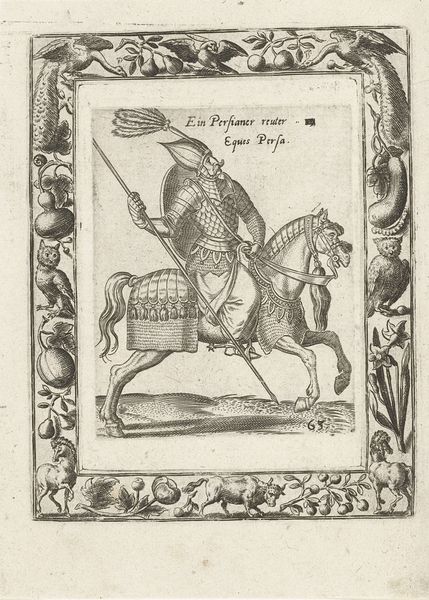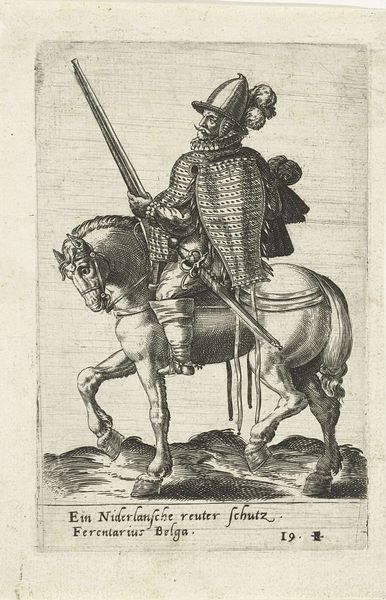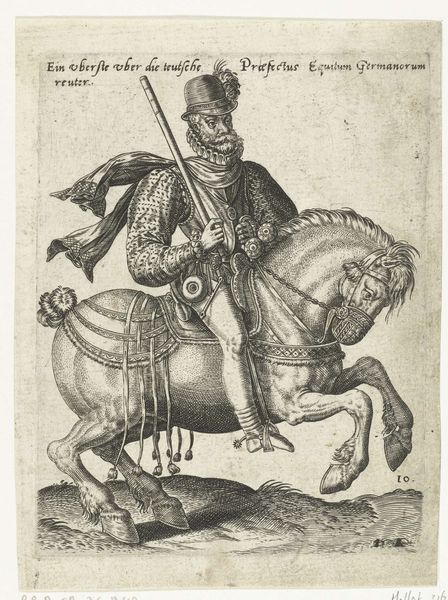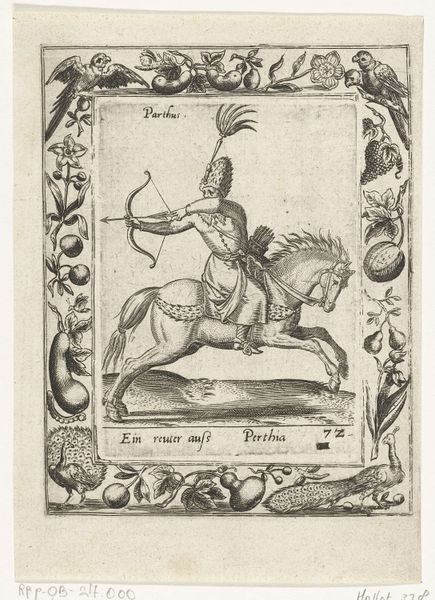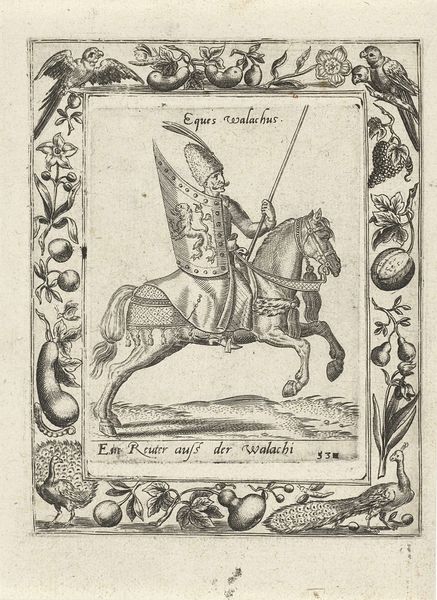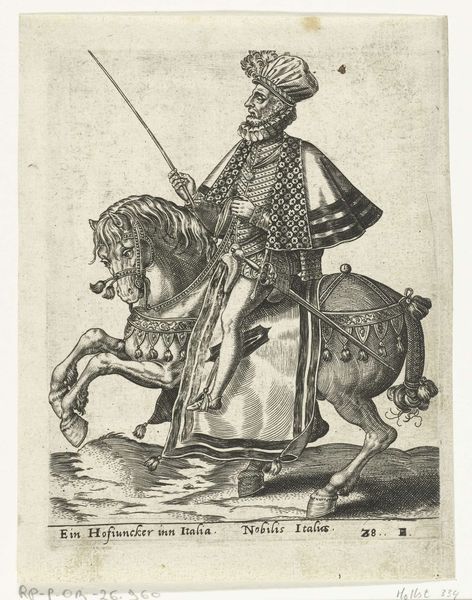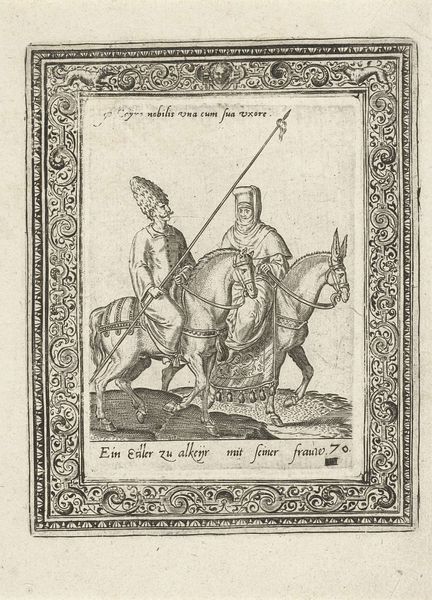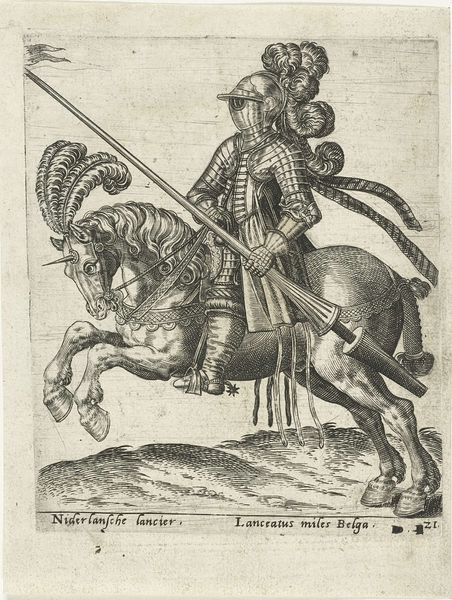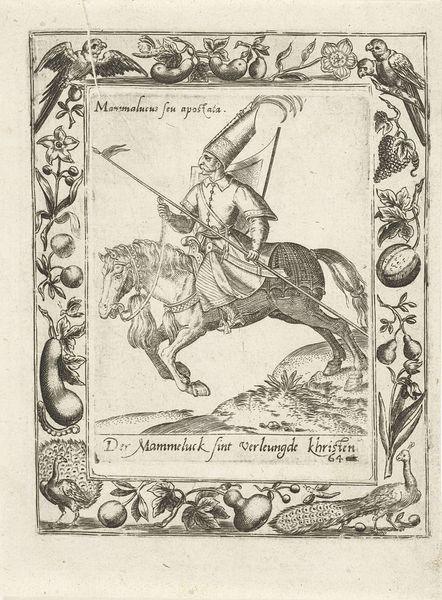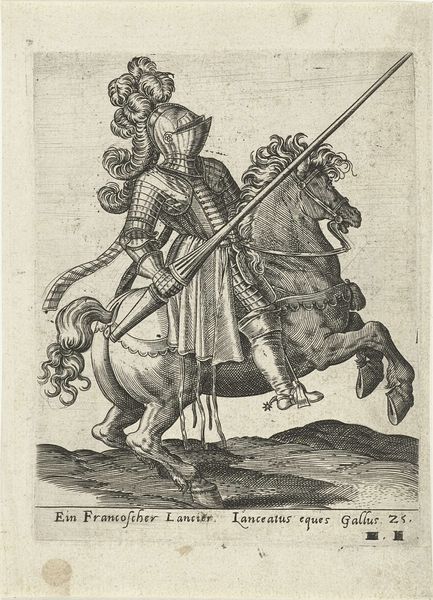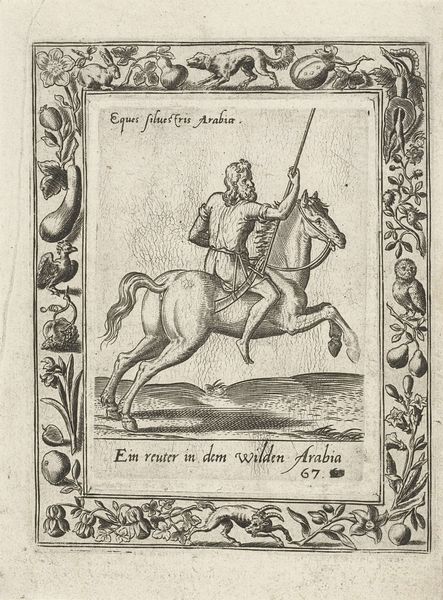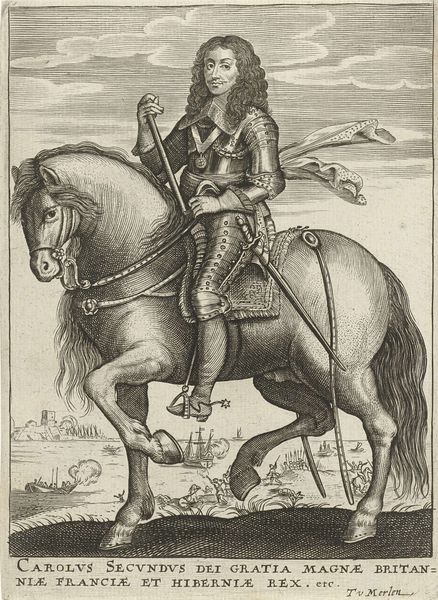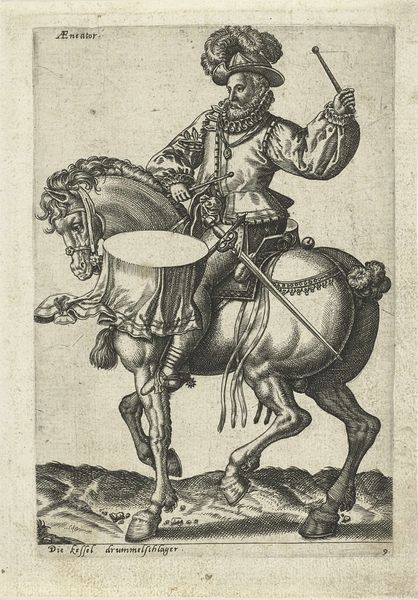
drawing, print, ink, engraving
#
portrait
#
drawing
# print
#
old engraving style
#
landscape
#
figuration
#
ink
#
history-painting
#
early-renaissance
#
engraving
Dimensions: height 140 mm, width 76 mm, height 105 mm, width 111 mm
Copyright: Rijks Museum: Open Domain
Curator: This engraving, "Indiase ruiter" or "Indian Rider", was created around 1577 by Abraham de Bruyn. Note the details rendered through the medium of ink on the print, it is housed right here at the Rijksmuseum. Editor: My immediate impression is one of curious contrast. The rider, seemingly presented with authority, has an undeniable vulnerability – or perhaps better stated: it highlights Western ignorance regarding non-Western people. Curator: Indeed, de Bruyn's use of line is particularly striking, setting up stark delineations that create a compelling contrast of light and shadow, not to mention it gives us insight into costume, setting and even cartographic imagination of the time. Note how it sculpts form. It allows one to describe the material qualities and weight of the textile of his hat. Editor: I agree. Considering this work from the Early Renaissance era through a postcolonial lens is really thought-provoking. We should question this depiction. Who gets to define representation, and what were their motives? Here the 'Indian' subject almost seems an imagined construction, shaped by the prejudices and limited understanding of European eyes, the shield itself obscuring almost his entire body. The floral elements bordering the main image are a kind of appropriation, if not almost theft of an ecological kind. Curator: I can see the interpretive path that you're paving. To your point, perhaps the artist used what visual language and what symbols were accessible, resulting in a hodgepodge of Western observation meeting what are imagined markers of Indian royalty and station. However, I'd encourage visitors to closely note how de Bruyn used light and shadow to further distinguish this character with regal dress that stands stark against his horizon. His hand suggests a grasp, holding both sword and steed with assuredness and elegance. Editor: While I grant you that his hand, drawn by de Bruyn is of a quality craftsmanship, and in line with the representational skill of that period in art history, but his firm "grasp" here does seem another visual articulation of dominance; it is the gaze itself. Curator: Food for thought! Thank you for these added perspectives that help to shape and color this artwork. Editor: And thank you for reminding us that images aren't neutral. Even in their lines and tones they are reflective and also deeply productive of social meaning.
Comments
No comments
Be the first to comment and join the conversation on the ultimate creative platform.
